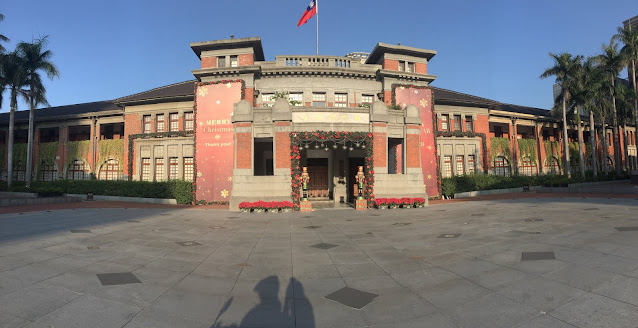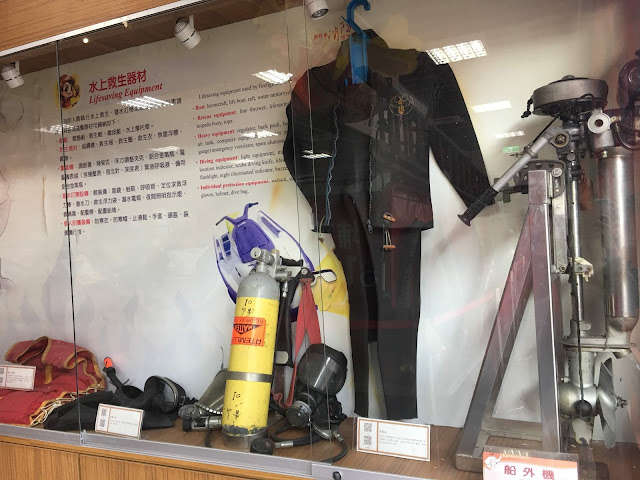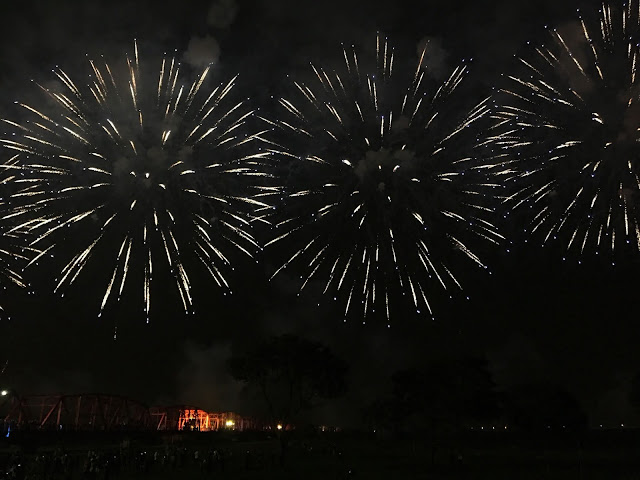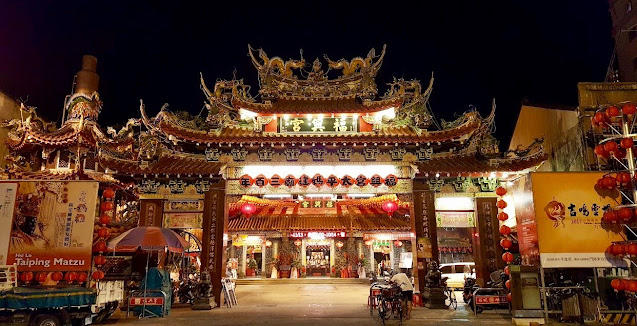Hsinchu, known as the windy city of Taiwan, is the oldest city in Northern Taiwan with a history of 400 years. It was originally inhabited by the Taokas tribe, an aboriginal people. The city was named Chuchang until the end of the 19th century.
During the Qing dynasty in 1826, the city walls and four gates were constructed. The East Gate (竹塹城迎曦門) is an important landmark of Hsinchu and the only gate that remains standing; the other three were destroyed during the Japanese occupation.
East Gate - Yingximen (竹塹城迎曦門)
In 1733, bamboo was the main building material for the city walls. However, during the Qing Dynasty in 1827, the walls were reconstructed using brick and stone, and a moat was dug. At the beginning of the Japanese occupation in 1902, the Governor's Office of Taiwan decided to make urban corrections, resulting in the demolition of the city walls and gates, leaving only the East Gate. The East Gate is a two-story colonnade-style tower with arched door holes and a title on the top of the main entrance. The roof was originally made of wood but was later supported with concrete during renovation.
During the Japanese era, Hsinchu served as the main administrative center between Taipei and Taichung. The city became known for its production of glass for medical equipment until 1960 when it shifted its focus to producing craft items. Today, Hsinchu is recognized as a center for decorative glass products.
See also: Beipu





Hsinchu Railway Station (新竹火車站)
Another historic building worth visiting is Hsinchu Railway Station. The railway station was first opened at the end of 1893, and the current railway building was constructed between 1908 and 1913 during the Japanese era. The Japanese architect was inspired by Western Gothic and Baroque styles that were popular at the time. It is the oldest active station in Taiwan and is designated as a national monument. The building was destroyed during World War II but was later repaired in 1947 with funds raised by the Taiwan Provincial Government. In 1989, after the complete abolition of steam locomotives, the fan-shaped garage was removed. The only remaining fan-shaped garage in Taiwan can be seen in Changhua.
See also: Changhua Fan Shaped Garrage

Hsinchu City Government (新竹州廳)
Hsinchu State Hall is another monument that was built during the Japanese occupation and has been preserved to this day. The hall was originally built in 1925, and the entrance porch was expanded in 1932. In 1945, Hsinchu City Government was established, and the State Hall building was used as an office building. In 1982, Hsinchu became a provincially-administrated city, and the state office became the municipal government office. In 1988, the Taiwan Provincial Government listed the State Hall as a provincial monument, and it underwent renovations between 2000 and 2005. The State Hall is built in a Western style, with a two-story brick building. The floor and beams are mainly made of reinforced concrete, and the roof is made of wood.
Hsinchu City Fire Museum (消防博物館)
Hsinchu City Fire Museum was originally built as a fire station but has been converted into a museum to preserve its historic value. Inside, you can see an old fire engine and equipment used by firefighters.
Chenghuang Temple (新竹都城隍廟)
The most important temple in Hsinchu City is Chenghuang Temple (新竹都城隍廟), built in 1748, which is the most famous temple in Hsinchu. Initially, the temple might not be easy to notice among the numerous food stalls around it. It's a very popular place.
Chenghuang (meaning city wall and moat) is the city God of justice. It's believed that prayers in this temple will be rewarded because the spirits of the deceased always inform the God of good and evil deeds. The God not only guards the city but can also be asked for help during natural disasters or for people accused of crimes. Hsinchu Chenghuang Temple is one of the three main temples, and during the Qing Dynasty, it was the only City God Temple in Taiwan.
During the Japanese occupation, the temple underwent renovations, and many decorations were added. Chenghuang's birthday is celebrated on the 29th of November in the Lunar Calendar and is traditionally marked with a parade and firecrackers.
The Chenghuang Temple's Night Market has a long history. The market began during the Japanese era with only four vendors, and over time, more and more vendors gathered here. The market around the temple is open every day from 10 am to 10 pm. You can find many delicious foods there, such as oyster omelettes, meatballs (rou yuan), shaved ice, cooked mochi, and traditional bitter tea.
Next to the Chenghuang Temple is Falian Temple, which was added during renovations in 1803.
See also: Xinpu



































